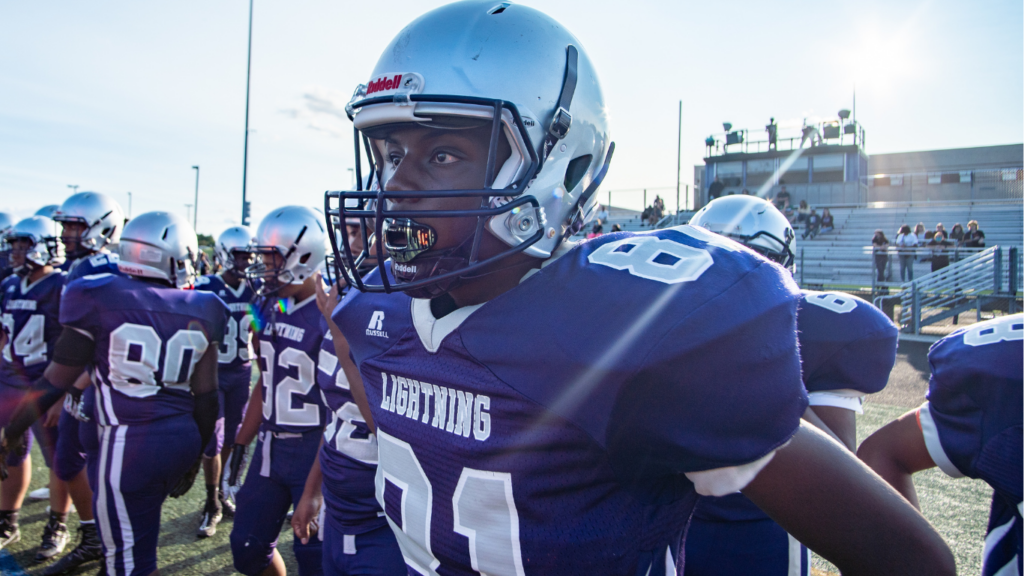The Origins of Sponsorship in Sports
Sponsorship in sports began as a means to increase brand awareness. Early sponsors saw the potential in aligning with popular teams and events.
Early Examples and Motivations
Corporate involvement in sports traces back to the late 19th century. Companies like Spalding manufactured equipment for sports teams and leveraged this by promoting their brands. Businesses sponsored events not just to advertise but to associate their products with the athletic prowess and excitement of sports. These early efforts aimed to connect with consumers through shared enthusiasm for athletic competition.
The Role of Advertisers and Brands
Advertisers and brands soon understood the influence of sports advertising. Companies like Coca-Cola and Ford forged relationships with sports leagues, using logos and signage to capture audience attention. Brand visibility during sporting events became crucial as it provided direct access to broad and diverse audiences. Over time, these partnerships evolved into more strategic collaborations, driven by the need for greater engagement and authenticity.
Growth and Commercialization
Major sports leagues saw enormous growth and commercialization over the years. This expansion transformed how sponsorships integrate into the sports industry.
Impact of Television and Media
Television’s widespread reach revolutionized sports sponsorship. As sports broadcasts became staples in households, brands accessed larger audiences at once. In the 1960s, the advent of color TV made sports more visually appealing, drawing viewers and sponsors alike.
For instance, the NFL capitalized on this trend by negotiating lucrative broadcast deals, enhancing exposure for both the league and its sponsors. Social media platforms introduced interactive fan experiences, allowing brands to engage directly with audiences.
The Rise of Corporate Partnerships
Corporate partnerships emerged as strategic alliances in sports sponsorship. Companies sought deeper integration within the sports ecosystem to leverage loyal fanbases.
By the 1980s, partnerships extended beyond traditional advertising; brands became integral to team identities. Nike partnered with NBA stars like Michael Jordan, launching signature lines that reshaped athletic branding.
Team stadiums bore sponsor names, reflecting the intertwining of sports and business. As a result, partnerships fostered increased brand loyalty and diversified revenue streams for both parties.
Digital Transformation and Innovation
Digital transformation has paved the way for groundbreaking innovations in sports sponsorship. Major leagues leverage cutting-edge technologies, redefining how brands connect with fans and enhancing the overall sporting experience.
Influence of Social Media Platforms
Social media platforms dramatically reshaped sports sponsorship by creating direct engagement channels between:
- teams
- brands
- fans
Instagram and Twitter offer real-time interactions and content sharing, establishing dynamic connections that transcend traditional sponsorship methods.
For example, brands sponsor exclusive behind-the-scenes content or fan-driven campaigns, increasing visibility and fan loyalty. Social media analytics provide valuable data, allowing sponsors to tailor messaging and optimize engagement strategies.
Emerging Technologies and Opportunities
- Emerging technologies offer new opportunities for sponsorship in major sports leagues, with innovations like virtual and augmented reality providing immersive fan experiences.
- Fans access augmented reality features for enhanced viewing, experiencing games in novel ways that increase engagement.
- Blockchain technology introduces transparency and security, allowing sponsors to create unique digital assets like NFTs, providing value to fans and sponsors.
- Brands utilize data analytics to understand fan behavior, optimizing personalized marketing strategies and improving sponsorship returns.
Case Studies of Major Leagues

Exploring the sponsorship evolution in major sports leagues offers insights into diverse strategies that have shaped modern partnerships.
NFL: Branding and Revenue Strategies
In the NFL, innovative sponsorship agreements have driven significant revenue growth. The league’s partnerships with companies like PepsiCo and Bose highlight the focus on brand integration within games and events.
I’ve noticed stadium naming rights as another critical element, with lucrative deals resulting in iconic venues like AT&T Stadium and Gillette Stadium. These agreements offer sponsors valuable exposure and create strong brand associations with the teams.
NBA: Global Expansion and Sponsorships
The NBA’s global reach owes much to its strategic sponsorships and marketing. Partnerships with brands like Nike and Tencent have helped broaden the league’s audience, particularly in Asia.
By collaborating with international companies, the NBA has created targeted marketing campaigns, furthering its appeal beyond the US. I’ve seen these initiatives drive merchandise sales and league popularity, consolidating the NBA as a dominant global sports entity.
Soccer: The Impact of International Markets
Soccer’s sponsorship landscape underscores the influence of international markets on league growth. European clubs like Manchester United and Real Madrid have secured partnerships with global brands such as Adidas and Emirates, which enhance visibility and revenue streams.
I’ve observed that these partnerships often feature shirt sponsorships and global marketing campaigns, solidifying soccer’s status as the world’s most popular sport. In less-established markets, newly formed leagues leverage sponsorships to attract fans and investment, fostering growth and development.
Challenges in Modern Sponsorship
Navigating modern sponsorship in major sports leagues involves overcoming a myriad of challenges. Understanding these hurdles helps in shaping more effective partnerships between brands and sports entities.
Balancing Tradition and Innovation
Balancing tradition with innovation is critical for brands aiming to engage sports fans effectively. Established fans often feel a deep connection to the heritage of their teams, while newer generations seek exciting, innovative experiences.
Brands must honor long-standing customs, such as team colors and mascots, while integrating modern elements like digital interactions and virtual experiences.
For instance, incorporating cutting-edge technology can enhance game-day experiences without alienating traditional fans, blending the old with the new seamlessly.
Legal and Ethical Considerations
Legal and ethical considerations significantly impact sponsorship strategies. Contracts must address evolving laws, including regulations on advertising to minors and restrictions on certain product categories. Ethical dilemmas arise with sponsors in industries like alcohol and gambling, where societal concerns can affect public perception and fan base loyalty. Brands strive to maintain ethical standards by aligning with community values and incorporating responsible marketing practices. Navigating these considerations ensures sustainable and reputable sponsorship partnerships within sports leagues.
Future Trends in Sports Sponsorship
Sports sponsorship is entering a new era dominated by advanced data analytics and innovative fan engagement techniques. This transformation is reshaping how brands and leagues interact with their audiences.
The Role of Data and Analytics
Data and analytics are increasingly crucial in formulating sponsorship strategies. By collecting and analyzing large volumes of data, brands can better understand fan preferences and behavior, tailoring marketing efforts for maximum impact. Sports teams use performance metrics and social media insights to assess the effectiveness of sponsorship campaigns.
For example, predictive analytics can forecast fan engagement trends, allowing brands to adapt strategies proactively. Data security and privacy have emerged as essential considerations, ensuring compliance while utilizing fan data.
Evolving Fan Engagement Strategies
Fan engagement strategies continuously evolve to meet changing consumer expectations. Innovative technologies play a pivotal role in these strategies. Virtual Reality (VR) and Augmented Reality (AR) create immersive experiences that bring fans closer to the action.
Brands craft personalized content strategies by leveraging social media platforms where user-generated content thrives. Interactive platforms, such as mobile apps and live events, enable real-time engagement and brand interaction. Collaborative fan-driven campaigns encourage active participation, fostering a deeper connection with the brand and enhancing loyalty.



 Founder & Chief Editor
Elaine Griffindorry is the visionary founder and chief editor of Sprint Scoop News. With over 15 years of experience in sports journalism, Elaine has a passion for breaking news, in-depth sports analysis, and insightful coverage of the business side of sports. She launched Sprint Scoop News to offer a fresh perspective on the world of sports, combining cutting-edge reporting with expert commentary on health, fitness, and esports. Elaine’s leadership ensures the site remains a trusted source for sports fans and professionals alike.
Founder & Chief Editor
Elaine Griffindorry is the visionary founder and chief editor of Sprint Scoop News. With over 15 years of experience in sports journalism, Elaine has a passion for breaking news, in-depth sports analysis, and insightful coverage of the business side of sports. She launched Sprint Scoop News to offer a fresh perspective on the world of sports, combining cutting-edge reporting with expert commentary on health, fitness, and esports. Elaine’s leadership ensures the site remains a trusted source for sports fans and professionals alike.
